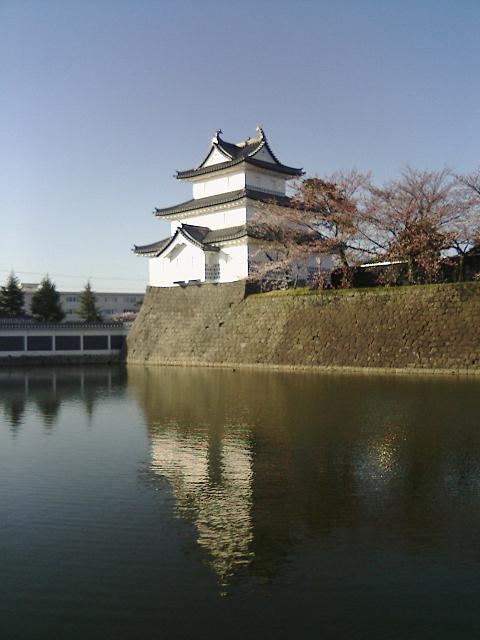 | ||
Type flatland-style Azuchi-Momoyama castle Condition The original Omote-Gate, and Ninomaru-sumi-yagura survive. Gosankai-yagura and Tatsumi-yagura reconstructed in 2004. In use Early Kamakura period-1873 Materials stone, wood, plaster walls Similar Kasugayama Castle, Nihonmatsu Castle, Yamagata Castle, Nanao Castle, Komine Castle | ||
Shibata Castle (新発田城, Shibata-jō) is a Japanese castle located in Shibata, Niigata Prefecture, Japan. Throughout the Edo period, Shibata Castle was home to the Mizobuchi clan, daimyō of Shibata Domain. The castle was also known as "Ayame-jō" (菖蒲城, "Iris Castle").
The construction date of the original Shibata Castle is unknown; however, the surrounding area was under control of the Shibata clan since the Kamakura period. The Shibata were destroyed in the early Muromachi period by the forces of Uesugi Kagekatsu. In 1597, Toyotomi Hideyoshi moved the Uesugi clan to Aizu-Wakamatsu and assigned the former Shibata lands to Mizoguchi Hidekatsu in 1598. Construction began immediately on a new castle, which was not completed until the rule of the 3rd generation daimyō of Shibata Domain, Mizobuchi Nobunao, in 1654. Much of the castle was destroyed by a fire in 1668 and rebuilt by 1679. The Omotemon (表門) main gate dates from a 1732 reconstruction.
Following the Meiji restoration and subsequent abolition of the han system, the Mizobuchi clan surrendered Shibata Castle to the new Meiji government. In 1871, the castle was garrisoned by a detachment of the Imperial Japanese Army, and in 1873 most of the structures were pulled down. At the time, it had 11 yagura watchtowers and five gates. Of those 16 main structures only one gate, the Omotemon, and one yagura Sumi yagura (隅櫓) remain today. Both are designated as important cultural properties. The wall outside the turret, in a style called Namako kabe (海鼠壁), is waterproof. The stone wall is made of regularly piled stones in the manner of Kirikomihagi.
In 2004, the Tatsumi yagura (辰巳櫓) turret and Sangai yagura (三階櫓) were reconstructed from old photographs and drawings.
In 2006, Shibata Castle was listed as one of the 100 Fine Castles of Japan by the Japan Castle Foundation.
The majority of the Ninomaru and the Honmaru baileys are occupied by a Japan Ground Self Defense Force base and public access is not permitted.
